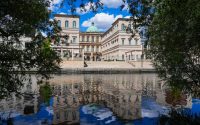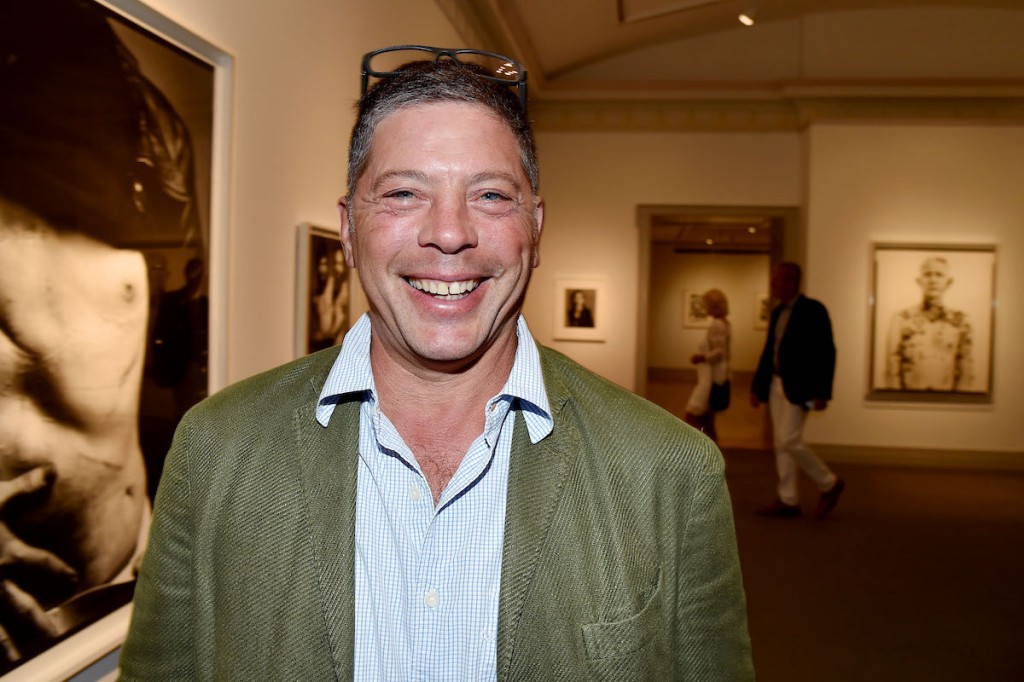A Giant Floating Structure Made from Plastic Bags Comes to a Seoul Museum
Frieze Seoul may be over, but as ARTnews reported from the ground last week, there is still plenty of art to see in the Southern Korean capital, including Anicka Yi’s first survey in Asia, at the Leeum Museum of Art. Also at the Leeum Museum, which is operated by the Samsung Foundation of Culture, is a three-month public project in collaboration with the Aerocene Foundation, titled “Aerocene Seoul.”
The exhibition is part of the Leeum’s “Idea Museum,” a long-term public program supported by Chanel’s Culture Fund that features events such as Museo Aero Solar, a massive, community-built, floating structure constructed from reused plastic bags. The bags are cut and taped together to form huge swaths of canvas. After filling the bags with air (with the help of a steady breeze), the sun’s heat warms the plastic skin that forms the structure, and over the course of the day, the sculpture begins to float like a fossil fuel–free hot air ballon.
Aerocene is the brainchild of artist Tomás Saraceno, whose work has previously involved spiders, floating sculptures, light, and more, all in service of global awareness. But rather than an artwork, Aerocene is a “community,” according to the artist’s studio, that functions more like an organization. In Seoul, the project will engage local communities in the city and elsewhere in South Korea, encouraging public participation in the creation of sustainable art and eco-social discourse.
The Leeum project runs through September 29. ARTnews discussed this project with Saraceno and two of his colleagues: Helen Jungyeon Ku, head of research and public programs at the Leeum Museum and curator of the Idea Museum, and Joaquin Ezcurra, an Aerocene Foundation collaborator. The conversation follows below. It has been edited for clarity and length.
ARTnews: What made you decide to bring the Museo Aero Solar to Seoul and the Idea Museum?
Helen Jungyeon Ku: This Aerocene Seoul project really aligns with a symposium we hosted last year that gathered science, theorists, artists, and activists to discuss different methods of sustainability. It was called “Idea Museum: Ecological Turns.” Tomás joined the symposium though Zoom and his involvement and ideas were so powerful that we wanted to invite him to the museum in person, and his Aerocene community very much aligns with how we want to engage with the public. Having him here is a real opportunity to build our own branch of community around sustainable thinking and integrate it into the global Aerocene community.
ARTnews: I’ve seen images of the Museo Solar both in the air and with people inside of it. Two years ago, at the Shed in New York City, there was a version that was filled with a ventilator. Can you tell me about some of the sculpture’s different modalities?
Tomás Saraceno: The sculpture works to bring people together—local communities come together to collect the plastic bags, and they assemble to museum together. But to me, the most interesting form the sculpture takes is as a banner. Many times in different iterations it has been used by activists to lift up messages as you would use a helium ballon. You can write a message right along the body, and as it lifts into the sky, you can see the words from very far off.
ARTnews: I’m interested in the Aerocene Backpack, a floating sculpture that can be built by anyone. Can you tell me about the mechanics, how does it work? What does it stand for?
Saraceno: A big part of the Aerocene community is moving away from the idea of ownership and toward sustainable sharing and living. The backpack is part of that discussion. Even though we work with institutions and galleries, no collector can buy an Aerocene Backpack—we won’t allow it. But people can learn to assemble one on their own. The instructions are on the website. And we will loan them out with the hope that, if you aren’t using it, you will pass it along to someone else in the community. We hope this helps people think about the relationship between people and objects, and how we can share tools that we don’t use every day with our neighbors. Through that sharing, they will one day hopefully lower the amount of waste and lessen the dependency on consumer goods. Partial and common ownership is something very much at the heart of the Aerocene community.
ARTnews: So then, apart from the sustainability aspect, the ideas of sharing and reusability are integral to both the Aerocene communities’ mission and the Leeum Museum.
Saraceno: Yes, definitely. Here’s a great example. For the Museo Aero Solar in Seoul we build a gigantic canvas—1,200 square meters. Then that was folded into one of the biggest-ever examples of the structure. And it was very interesting because it was built partially out of another Museo Aero Solar, from a community in Thailand, that was created last year.
Joaquin Ezcurra: And that Museo Aero Solar was taped together with two other sculptures that came all the way from Argentina, one that was tied to the concept of democracy in schools and another that was being flown with a message in defense of public education. So all these messages and experiences have come together to form the sculpture that we have here in Seoul.
ARTnews: And was the Museo launched successfully?
Ezcurra: Oh, yes! It was such a magical moment. We had a whole team from the Leeum working together. We took the sculpture to a park. It took like an hour to get thousands of cubic meters of air into the Museo, and it was amazing. It just lifted up into the atmosphere. It’s performance art. It’s sculpture. It’s physics. It’s really an example of what the world can be.



